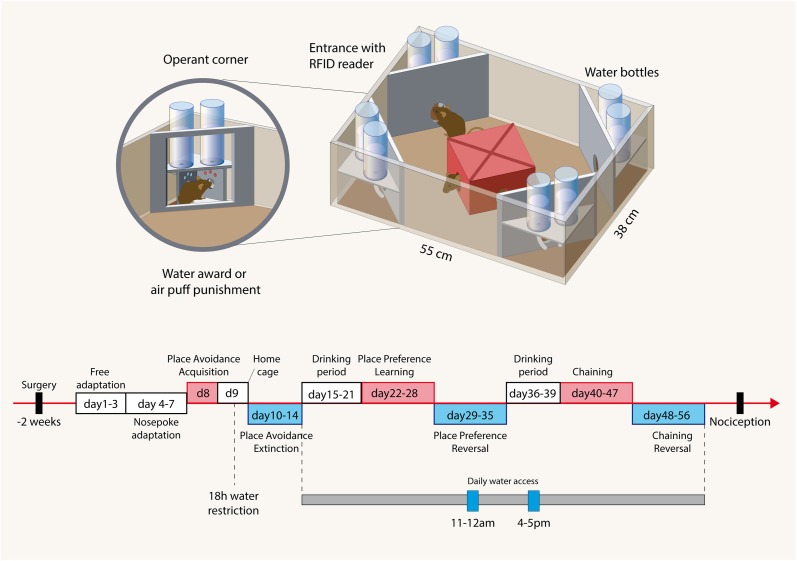Figure 1.
Illustration of the IntelliCage and the time course of experimental tasks. Cage: The IntelliCage consists of four operant corners, each with two water bottles, sensors and doors that control the access to the water bottles. Mice are tagged with radio-frequency identification transponders (RFID), which are read at the corner entrance. Inside the corners, there are two holes with water bottles, which can be opened and closed by automated doors. Mice have to make a nosepoke to open the doors for water access. The IntelliCage is controlled by a computer. The number and duration of corner visits, nosepokes, licks, and contact times with the nipples of the water bottles are automatically recorded. Time schedule: The spared nerve injury and sham surgeries were performed 2 weeks before starting the free adaptation in the IntelliCage with free access to water in all corners. During “nosepoke adaptation” mice had to perform a nosepoke to get water, which was possible in every corner. In the “avoidance acquisition” mice received an air-puff punishment and did not get water in one of the corners. During “avoidance extinction” no air-puff punishments were applied and water was available in every corner. In “drinking periods” mice were adapted to get water only at 11–12 a.m. and 4–5 p.m. These restricted drinking times were maintained up to the end of the experiments and provided some synchronization of the behavior. During “place preference learning” mice got water in only one corner. After learning to prefer this corner, the water awarding corner was switched to the respective opposite corner (“place preference reversal”). After cleaning the cage and removing cues mice were then re-adapted to the drinking periods, which were maintained for “chaining” and “reversed chaining” tasks. In these experiments mice got water in one corner either in a clockwise or anti-clockwise sequence of the corners. After 8 days the direction was inverted. Tasks are summarized in Table 1.

